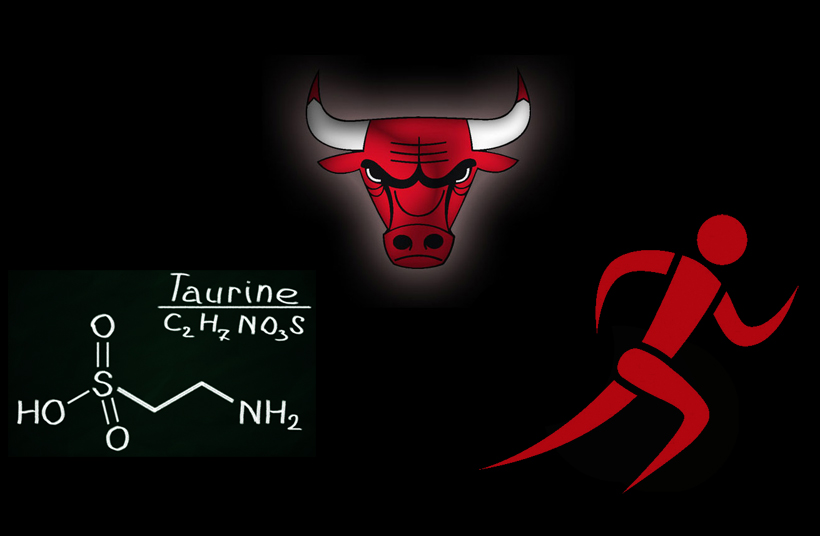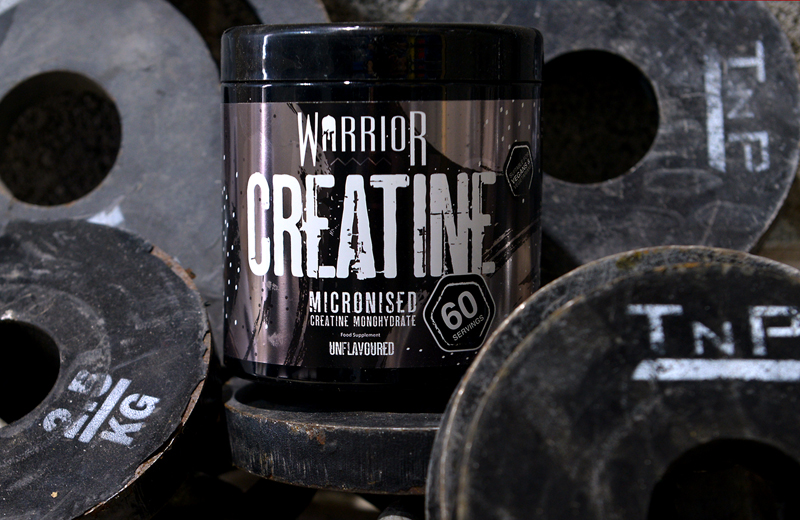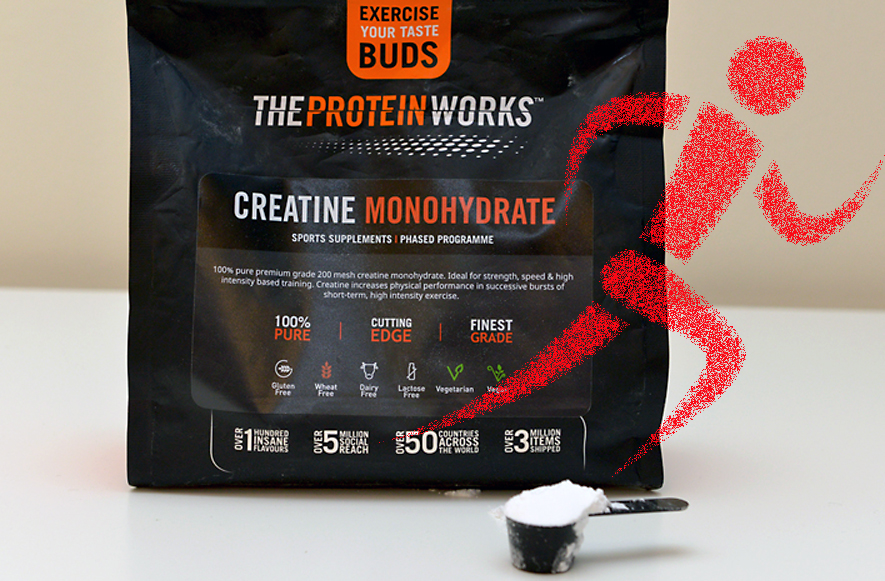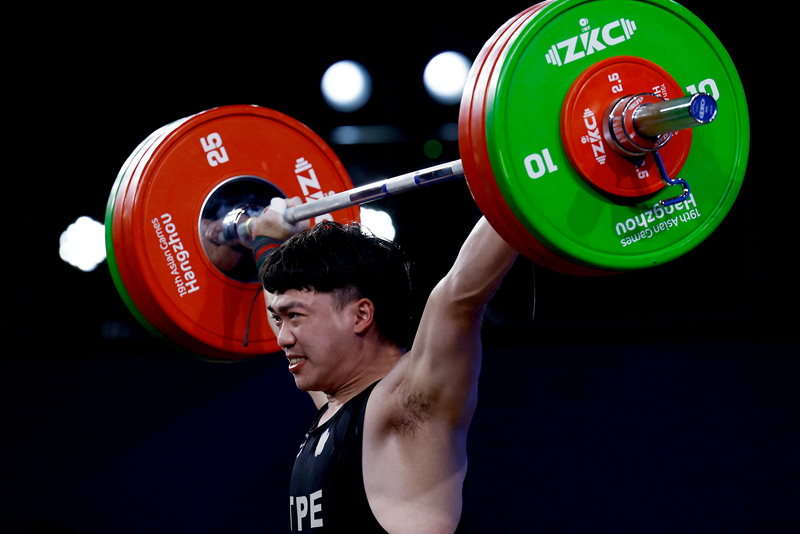You are viewing 1 of your 1 free articles. For unlimited access take a risk-free trial
Taurine nutrition: taking a bullish approach to anti-aging!
SPB looks at brand new research on the amino acid taurine, and how it might help combat the aging process, especially in older athletes!
Although you might be more familiar with it as a constituent of a famous energy drink featuring a red bull for its logo, the amino acid known as taurine has actually been around for a lot, lot longer. In fact, taurine was first isolated in 1827 from the bile of an ox, and was so named because the Latin name for an ox is ‘Bos taurus’. Scientists have long understood that taurine plays an important role in mammalian nutrition, but it’s only much more recently that we’ve begun to appreciate how important it could be for health and longevity.
What is taurine?
Taurine is a sulfur-containing amino acid (full chemical name 2-aminoethanesulfonic acid – see figure 1) that plays a vital role in mammalian and human metabolism. Taurine is regarded as a ‘semi-essential’ amino acid, which means that it’s an amino acid essential for health, but one which can also be synthesized in the body the amino acid cysteine, which is also found abundantly in the diet. In theory then, providing enough cysteine is consumed (found in a wide range of proteins), the body should be able to synthesize enough taurine, even when the diet is low in taurine. As we shall see shortly however, it’s not always this simple!
Figure 1: Chemical structure of taurine
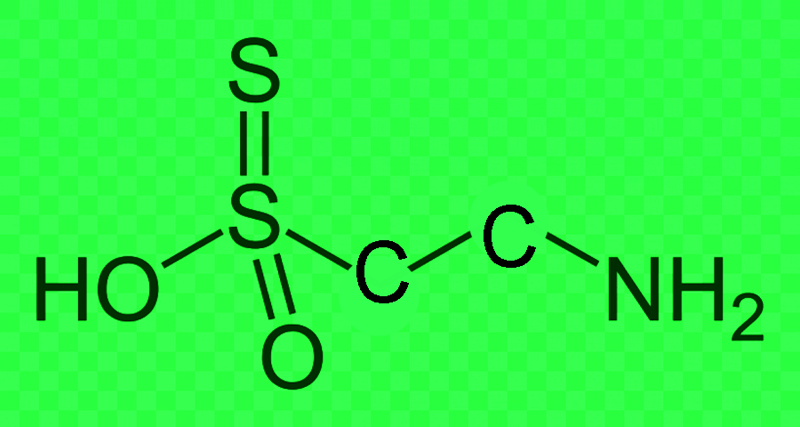
Why is taurine important?
Taurine plays a crucial role in the body, being found at high concentrations in the liver and kidneys(1). However, it is also present in most other tissues of the body including the retina of the eyes, the heart, brain and in muscle tissue(2). Taurine is required for various processes in the body including development of the brain in children, eye and optical function, maintaining the integrity of the immune system, the stabilization of cell membranes, heart muscle regulation and regulating and controlling inflammation(3).
Because of these vital functions, taurine has attracted a lot of interest from researchers over the years, particularly as a possible therapeutic agent for improving health. Although much of this research has been conducted using animal models, a number of studies into taurine nutrition in humans have taken place. A 2010 review study on this topic concluded that optimum taurine intakes can improve blood lipid profiles (triglycerides and cholesterol), lower blood pressure, and also act as an antioxidant and anti-inflammatory agent in the body(4). The researchers also went on to argue that: ‘Data from existing human studies indicates that [optimum intakes of] taurine may confer substantial benefits in reducing the risk of coronary heart disease in the population as a whole.’
How are taurine requirements met?
Taurine is available in various types of foods. In particular, taurine is found in high quantities in shellfish, especially mussels, scallops and clams. Another good source of taurine is in the dark meat of chickens and turkeys Taurine is also found at low concentrations in dairy products, such as cow’s milk, cheese and yogurt. Fruits, vegetables, legumes, nuts and seeds and other plant foods are not good sources of taurine, containing virtually none. The good news is that cooking does not reduce taurine levels.
In mammals, taurine is generally recognized as the most abundant amino acid in the body(5). However, due to a curiosity of nature, this is not the case for humans and cats. We, along with cats, are limited in the amount of taurine we can synthesize in the body for other amino acids, which is why dietary intake becomes important. Indeed, pick up any tin of cat food and you’ll see it is heavily fortified with taurine! In short, although humans can synthesize taurine, there may be circumstances where this synthesis falls short of what is needed for optimum health and performance, a subject that we will touch on later.
Taurine and exercise
When it comes to sports performance, taurine has long been an amino acid of interest. In particular, it often finds its way into a number of pre-exercise drinks because, taurine, when taken as a pre-exercise supplement, is claimed to enhance focus and performance. In reality however, the evidence for its acute performance benefits has been far from clear cut. For example, a 2016 study on runners found that six grams of taurine taken pre-exercise did not improve high-intensity running performance, although there was a non-significant increase in the ability of runners to sustain an oxygen deficit(6). Meanwhile, an earlier study on cyclists found that 1.7 grams of pre-exercise taurine didn’t enhance time trial performance(7). Interestingly though, it did slightly increase fat oxidation.
More positively however, a review study carried out in 2018 pooled the data from ten previous studies on taurine and exercise performance using supplementation levels of 1-6 grams per day(8). It found overall that there was a small but modest performance benefit for endurance performance, particularly for time to exhaustion. However, there was no evidence that taurine boosted sprint/high-intensity performance, or mood, or cognitive performance, which is the claim often made for it when used in sports drinks. Strangely also, there didn’t seem to be a link with taurine supplementation dose and the magnitude of the endurance benefits delivered.
In the past five years, not much research was carried out into taurine supplementation and sports performance. However, in the last year or so, there have been some interesting findings, particularly when looking at slightly higher pre-exercise doses of taurine. A study last year investigated the effects of a 3-gram pre-exercise dose of taurine supplementation on the Wingate test (incremental test to exhaustion) in elite male boxers(9). It found that a single dose produced a significant increase in both peak power (Watts per kilo) and average power in the test.
Coming right up to date, a study published just two months ago investigated the acute effect of low (2 grams), moderate (4 grams), or high doses (6 grams) of taurine on anaerobic and physiological performance in female rugby players performing a Wingate test to exhaustion on a stationary bike(10). It found that the moderate taurine dose improved average power during the test while the high dose improved both average power and peak power. Taking all these studies as a whole, it may be that the confusing results observed in earlier taurine studies arose due to variations in dosing regimens.
Taurine, health and aging
As interesting as the findings on taurine and performance are, the really exciting (and potentially revolutionary) new research on taurine lies in the area of its potential health-promoting and anti-aging properties. In a new study published in the journal ‘Science’ earlier this month, researchers outlined their findings on Taurine and aging(11). Titled ‘Taurine deficiency as a driver of aging’, this study looked at how the levels of taurine in a range of organisms change during the aging process, and how restoring youthful levels of taurine using supplementation might reverse key markers of aging.
The process of aging
The international team of researchers, headed up by Vijay Yadav, an assistant professor of genetics development at Columbia University Vagelos College of Physicians and Surgeons, started by considering the aging-related changes in the body that manifest themselves as various hallmarks of aging. Over time, these changes cause organ functions to decline, and increase the risk of disease and death. The key hallmarks of aging include(12):
· Genomic instability – an increase of improper DNA replication in cell division leading to faulty ‘code’ and errant cells (eg cancerous cells).
· Deregulated metabolite sensing – where cells fail to detect and regulate key metabolites, leading to chemical and physiological imbalances.
· Mitochondrial dysfunction – where the mitochondria (energy factories) in cells become less efficient, making it harder to power the biochemistry needed to maintain cell health.
· Stem cell exhaustion – a reduction in the production of these special cells, which are able to develop into many different cell types and in some cases, repair damaged tissues.
· An increase in senescent cells – cells that stop multiplying but don’t die off when they should, instead remaining and continuing to release chemicals that can trigger inflammation in neighboring cells.
It is known that aging-associated decline in organ function can result from changes in the concentrations of endogenous (produced by the body) metabolites, hormones, and micronutrients in blood(13,14). However, what is not known is whether these changes are ‘passengers’ or ‘drivers of aging’. In other words, do changes to hormones, nutrients and metabolite happen as a consequence of aging or are they actually involved in driving the aging process?
The research
In a huge and lengthy study, the researchers extensively investigated the relationship between taurine and aging to try and answer this question. Why taurine specifically? Well, they noted that taurine, is one of the most abundant amino acids in humans and other eukaryotes, and that earlier studies have shown that the concentration of taurine in blood correlates with health. With that in mind, they set about measuring the blood concentration of taurine during aging in a number of species and investigated the effect of taurine supplementation on health span and life span in those species.
To comprehensively study whether taurine abundance influences healthy lifespan, the researchers started by measuring blood taurine concentrations at different ages in mice, monkeys, and humans. What they found was remarkable and consistent across the species:
· In wild-type mice, blood taurine concentrations declined from 132ng/ml at four weeks to 40ng/ml at 56 weeks (figure 2A).
· In 15-year-old monkeys, serum taurine concentrations were 85% lower than in 5-year-old monkeys (figure. 2B).
· Likewise, taurine concentrations in elderly humans were decreased by more than 80% compared with the concentration in serum of younger individuals (figure 2C).
Figure 2: Changes in blood taurine levels with aging in different species
Related Files

Lifespan effects of boosting taurine
The next step was to observe what would happen in these species if extra taurine was given as a supplement. Did extra taurine increase lifespan? Did it improve key markers of health? To test this theory, the researchers started with two hundred and fifty 14-month-old female and male mice (equivalent to around 45 in human years). Each day until the end of their lives, the researchers fed half of these mice 1 gram per kilo of taurine or a control solution (plain water). The results showed that feeding extra taurine increased average lifespan by 12% in female mice and 10% in males (see figure 3). For the mice, that meant three to four extra months, which is equivalent to an extra seven or eight human years!
Figure 3: Lifespan and taurine supplementation
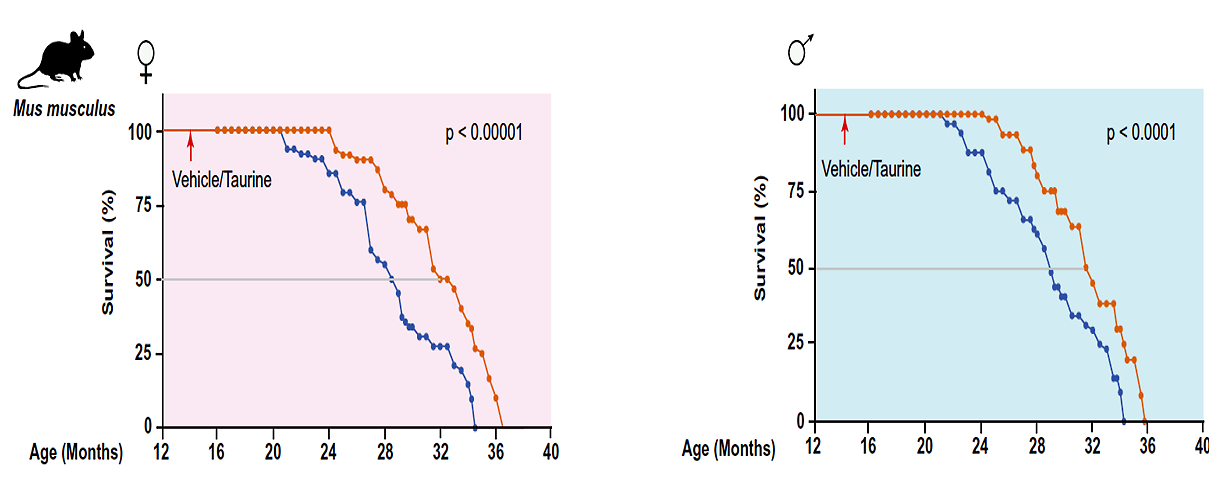
In a related experiment, the same procedure was carried out with different cohorts of worms (yes, they have the same taurine metabolism as mammals!) that received either extra taurine or no taurine. As was the case in the mice, giving extra taurine extended lifespan by 10 to 23% in the taurine-supplemented worms. In yet another similar experiment, the effects of taurine were investigated on yeast. But unlike the mice and worms, extra taurine did not expand the lifespan of yeast cells – almost certainly because the taurine metabolism pathways in yeast (not a eukaryote) are very different to that in mammals and invertebrates.
Health and taurine supplementation
It was not just the increased lifespan in the mice when taurine was supplemented that excited the researchers, but the health benefits too. When markers of mice health were tested at the age of two years (60 in human years), those supplemented with taurine for one year were healthier in almost every way than their untreated counterparts. In short, extra taurine suppressed age-associated weight gain in female mice (even in ‘menopausal’ mice), increased their energy expenditure, increased bone mass, improved muscle endurance and strength, reduced depression-like and anxious behaviors, reduced insulin resistance, and promoted a ‘younger-looking’ immune system. Similar health effects of taurine supplements were seen in middle-aged rhesus monkeys that were given daily taurine supplements of 250mgs per kilo per day for six months. In these monkeys, taurine prevented weight gain, reduced fasting blood glucose and markers of liver damage, increased bone density in the spine and legs, and improved the health of their immune systems.
Taurine and the hallmarks of aging
Earlier in this article, we discussed five key hallmarks of aging. How did taurine supplementation affect these markers in the mice and monkeys? When the researchers carried out blood analysis and muscle biopsies it was immediately apparent that giving extra taurine improved all of the key functions that usually decline with age. In particular, taurine supplementation:
· Decreased the number of senescent cells (remember, these are old cells that should die but instead linger and release harmful substances).
· Reduced genetic instability during cell replication.
· Increased the number of stem cells present in some tissues, aiding the ability of these tissues heal after injury.
· Improved the performance of cell mitochondria.
· Reduced the amount of DNA damage due to oxidation.
· Improved the cells’ ability to detect and respond to nutrients.
Taurine, human health and human longevity
At this point, you’re probably wondering if the same benefits of taurine supplementation – longer, healthier lives - demonstrated in the mice and monkeys would also be experienced by humans undergoing a similar supplementation program? Unfortunately, this question needs clinical trials taking place over many years or decades to provide a definitive answer. This is why monkeys and mice were initially investigated; their shorter lifespan allows us to observe age-related changes/benefits from taurine supplementation in a relatively short time frame.
However, two further experiments also conducted by Yadav and his team in this study suggest taurine really does have the serious potential to improve human health and longevity. In the first experiment, the researchers looked at the relationship between taurine levels and approximately 50 health parameters in 12,000 European adults aged 60 and over. It found that overall, people with higher taurine levels were healthier, with fewer cases of type 2 diabetes, lower obesity levels, reduced hypertension, and lower levels of inflammation - results that are consistent with the possibility that taurine deficiency contributes to human aging.
The second experiment investigated if taurine levels responded to an intervention 100% known to improve health - exercise. The researchers measured taurine levels before and after a variety of male athletes and sedentary individuals finished a strenuous cycling workout. They discovered there was a significant increase in taurine among all groups of athletes (sprinters, endurance runners, and natural bodybuilders) and sedentary individuals. As Professor Yadav explained: “No matter the individual, all had increased taurine levels after exercise, which suggests that some of the health benefits of exercise may come from an increase in taurine.”
Implications for athletes (and everyone else!)
Taurine has long been investigated in the context of exercise performance and more recently for its association with key markers of health. However, this quite remarkable research suggests that taurine metabolism (and shortfall) plays a major role in the aging process, the development of chronic disease and potential lifespan, particularly in mammals, which of course includes the human species.
What is needed at this point are long-term intervention studies in humans, looking at taurine supplementation, particularly in subjects who are in the 40+ age group. If the same results found in mice and monkeys are replicated in humans, the findings would be revolutionary indeed! Of course, these kinds of studies will by their very nature take many years or even decades to yield solid findings. In the meantime however, the weight of evidence for health and longevity benefits, combined with the potential for improved sports performance, may be compelling enough for you to try some long term taurine supplementation. This is especially the case given that taurine is cheap, has no known side effects and is associated with positive changes in health markers. In short, if you can afford some daily taurine, there are no downsides whatsoever!
In the studies on mice above, the taurine dosage was around 1 gram per kilo of bodyweight per day. That would equate to around 70 grams per day for the average adult, which is a very high dose. In the monkey study, the dose was 250mgs per kilo per day, equating to around 17 grams per day for a 70kg human – still quite high. However, studies on human subjects using taurine have produced success at much lower doses. For example, a 2021 study in overweight women found that just 3 grams per day of taurine supplementation was associated with increased fat burning during exercise, and that this happened because taurine upregulated gene activity related to mitochondrial activity and fatty acid oxidation(15).
Given the earlier data on exercise performance and taurine dosage, a good starting point might be to begin with 3 grams per day of taurine for lighter athletes (under 60kg), perhaps increasing to 4 grams per day for heavier athletes. The cheapest way to take taurine is to buy pure taurine powder and blend it into drinks such as fruit juice or protein shakes. The good news is that unlike many other pure amino acids (which taste like old socks), taurine has a very neutral taste so should go down very well indeed!
REFERENCES
1. Mol. Vis. 2012;18:2673–2686
2. J Amino Acids. 2014;2014:346809. doi: 10.1155/2014/346809
3. Redox Biol. 2019 Jun; 24: 101223
4. Atherosclerosis. 2010 Jan; 208(1): 19
5. Curr. Med. Chem. 2005;12(17):2021–2039
6. Appl Physiol Nutr Metab. 2016 May;41(5):498-503
7. Int J Sport Nutr Exerc Metab. 2010 Aug;20(4):322-9
8. Int J Sport Nutr Exerc Metab. 2010 Aug;20(4):322-9
9. Nutrients. 2022 Oct 20;14(20):4399. doi: 10.3390/nu14204399
10. Res Sports Med. 2023 Apr 6;1-10
11. Science. 2023 Jun 9;380(6649):eabn9257. doi: 10.1126/science.abn9257. Epub 2023 Jun 9
12. Cell 2013. 153, 1194–1217
13. NPJ Aging Mech. 2016; Dis.2, 16017
14. Cell Metab.2020; 32, 447–456.e6
15. Clin Nutr. 2021 Apr;40(4):2180-2187
Newsletter Sign Up
Testimonials
Dr. Alexandra Fandetti-Robin, Back & Body Chiropractic
Elspeth Cowell MSCh DpodM SRCh HCPC reg
William Hunter, Nuffield Health
Newsletter Sign Up
Coaches Testimonials
Dr. Alexandra Fandetti-Robin, Back & Body Chiropractic
Elspeth Cowell MSCh DpodM SRCh HCPC reg
William Hunter, Nuffield Health
Keep up with latest sports science research and apply it to maximize performance
Today you have the chance to join a group of athletes, and sports coaches/trainers who all have something special in common...
They use the latest research to improve performance for themselves and their clients - both athletes and sports teams - with help from global specialists in the fields of sports science, sports medicine and sports psychology.
They do this by reading Sports Performance Bulletin, an easy-to-digest but serious-minded journal dedicated to high performance sports. SPB offers a wealth of information and insight into the latest research, in an easily-accessible and understood format, along with a wealth of practical recommendations.
*includes 3 coaching manuals
Get Inspired
All the latest techniques and approaches
Sports Performance Bulletin helps dedicated endurance athletes improve their performance. Sense-checking the latest sports science research, and sourcing evidence and case studies to support findings, Sports Performance Bulletin turns proven insights into easily digestible practical advice. Supporting athletes, coaches and professionals who wish to ensure their guidance and programmes are kept right up to date and based on credible science.
